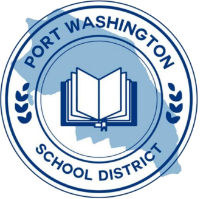Plan Overview
Plan Overview
|
Focus Area: Data Systems Usable Practice: Usable Practice: Develop and implement a system for data collection, review, monitoring and assessment that can be used to shift student outcomes. The collected data will assist in making an informed decision by zeroing in on priorities such as behavior and academic outcomes to establish a plan to improve disproportionate student performance and behavioral outcomes particularly for marginalized students. |
||||
|
Year 1 |
Year 2 |
Year 3 |
Year 4 |
Year 5 |
|
Outcome Goal: By June 2023, review and identify sources of data to be collected, reviewed and utilized in monitoring of behavior and academic outcomes.
|
Outcome Goal: By June 2024, revise systems and practices for data collection.
|
Outcome Goal: By June 2025, train 100% of administrators, teachers and staff on data collection practices.
|
Outcome Goal: By June 2026, staff will fully be implementing data collection plan, policies, procedures, practices, and monitoring the usage of data. |
Outcome Goal: By June 2027, the data system will be evaluated for effectiveness.
|
|
Focus Area: Multi-Tiered Systems of Support Usable Practice: Develop and implement a Multi-Tiered System of Support (MTSS) that is culturally responsive to racially, culturally and linguistically marginalized students to inform data driven decision making to provide culturally responsive tiered supports to shift discipline and academic outcomes. |
||||
|
Year 1 |
Year 2 |
Year 3 |
Year 4 |
Year 5 |
|
Outcome Goal: By June 2023, review and revise MTSS policies and practices of behavior, academic and SEL. |
Outcome Goal: By June 2024, 75% of staff will have exposure and understanding on how to use MTSS using SEL practices, revised and aligned academic supports and code of conduct. |
Outcome Goal: By June 2025, 25% of behavioral referrals for Black, multi-racial, Latinx students will be reduced (K-12) due the implementation of a new code of conduct, SEL practices, and AIS/academic supports.
|
Outcome Goal: By June 2026, 50% of behavioral referrals for Black, multi-racial, and Latinx students will be reduced. |
Outcome Goal: By June 2027, 75% of behavioral referrals for Black, multi-racial, and Latinx students will be reduced.
|
|
Focus Area: Professional Learning and Development Usable Practice: Develop, disseminate, and implement a professional development plan, using our existing professional learning structure, that is culturally responsive for educators and addresses disproportionality and academic outcomes, disciplinary measures, and curricular access for marginalized students. |
||||
|
Year 1 |
Year 2 |
Year 3 |
Year 4 |
Year 5 |
|
Outcome Goal: By June 2023, select teachers, staff, and community members will gain familiarity with the moral imperative, understand key terms (disproportionality, bias, gender identity) and have some experience interpreting data for disciplinary actions and academic outcomes/access for students of color. |
Outcome Goal: By June 2024, the committees will create and coordinate the professional development intention and goals for the entire school community on culturally responsive disciplinary practices (which may include referrals, class management, informal actions and suspension data) and academic access/outcomes.
|
Outcome Goal: By June 2025, the committees will begin to implement professional learning to the entire school community on culturally responsive disciplinary practices and academic access/outcomes. |
Outcome Goal: By June 2026, the committees will begin to review, modify and assess the professional learning implementation to the entire school community on culturally responsive disciplinary practices and academic access/outcomes.
|
Outcome Goal: By June 2027, the committees will continue to review, modify and assess the professional learning implementation to the entire school community on culturally responsive disciplinary practices and academic access/outcomes.
|
|
Focus Area: Family and Community Engagement Usable Practice: Identify, develop and implement a sustainable system for family and community engagement that ensures representation of racially, culturally, and linguistically marginalized families in order to build effective ongoing communication between community members and the school district staff. |
||||
|
Year 1 |
Year 2 |
Year 3 |
Year 4 |
Year 5 |
|
Outcome Goal: By June 2023, an assessment and evaluation of existing community engagement practices and communication will be conducted.
By June 2023, a structure to enhance and improve community outreach by assessing where we are and building a committee to improve communication will be established.
By July 2023, establish the Family and Community Engagement Sub-Committee. |
Outcome Goal: By January 2024, develop a communication framework that is culturally responsive and addresses language access for ELL families*.
By May 2024, the FCT sub-committee will share and message the Communication Framework. |
Outcome Goal: By March 2025, research and begin to establish Community Resource Center to aid with community needs.
By October 2024, partnership with the district Diversity Committee will be developed.
By June 2025, establish baseline data for student participation from marginalized student groups in the following areas: graduation rate, enrollment in advanced classes, co-curricular and extra-curricular activities. |
Outcome Goal: By June 2026, Increase engagement of marginalized community members by 25%.
By June 2026, increase graduation rates and participation in advanced courses, extra and co-curricular programs by traditionally marginalized students by 25%.
|
Outcome Goal: By June 2027, Increase engagement of marginalized community members by 50%.
By June 2027, increase graduation rates and participation in advanced courses, extra and co-curricular programs by traditionally marginalized students by 50% and engagement of marginalized community members by 50%.
|
